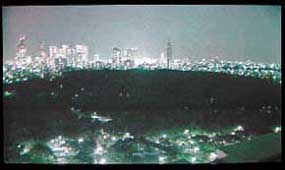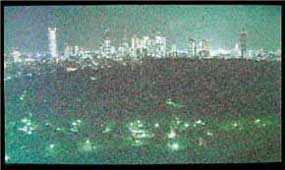 |
| Ultimate Ultrahigh Sensitivity HARP Imaging Device -Toward the dream image pickup device- |
 |
Kenkichi TANIOKA, Director, Advanced Imaging Devices Division |
| An imaging device is an electronic component in a TV camera
that plays an important role in converting light into a video signal.
The STRL has been promoting research on the ultimate ultrahigh sensitivity
imaging device, with the goal of obtaining clear video images even under
dim lighting. The ultimate ultrahigh sensitivity imaging device, which has long been dreamed about, would have a signal to noise (SN) ratio at the very edge of the theoretical limit. The realization of such a device will provide a clear video image in any lighting environment, with less noise than any conventional camera. Realization of such an ultimate imaging device will bring to broadcasting the following merits: (1) Definite nighttime emergency reporting response capability. (2) More enriched video expression. (3) Environmentally-friendly energy saving studios. It is believed that this ultimate device can be achieved by the development of the avalanche-mode photoconductive target, called HARP (High-gain Avalanche Rushing amorphous Photoconductor), which our laboratories have invented. This photoconductive target will make such an ultrahigh sensitivity imaging device feasible, due to its superior characteristics. These include no added noise amplification, and conduction of all the incoming light particles (photons) to the photoconverter (100% full factor). In the future, its characteristics will be further enhanced by additional improvements to the S/N ratio. This will be accomplished by bringing the photodetection efficiency (how efficiently the HARP target converts photons to electrons) close to 100% throughout the entire visible spectrum. The picture inserted below shows an example of a nighttime shooting experiment comparing an ordinary CCD camera with a camera using the improved HARP target. This HARP camera with enhanced noise reduction captured a clear nighttime image, which is difficult to shoot with an ordinary camera. This gives an indication of the world of future possibilities. |
|
||||||||||

